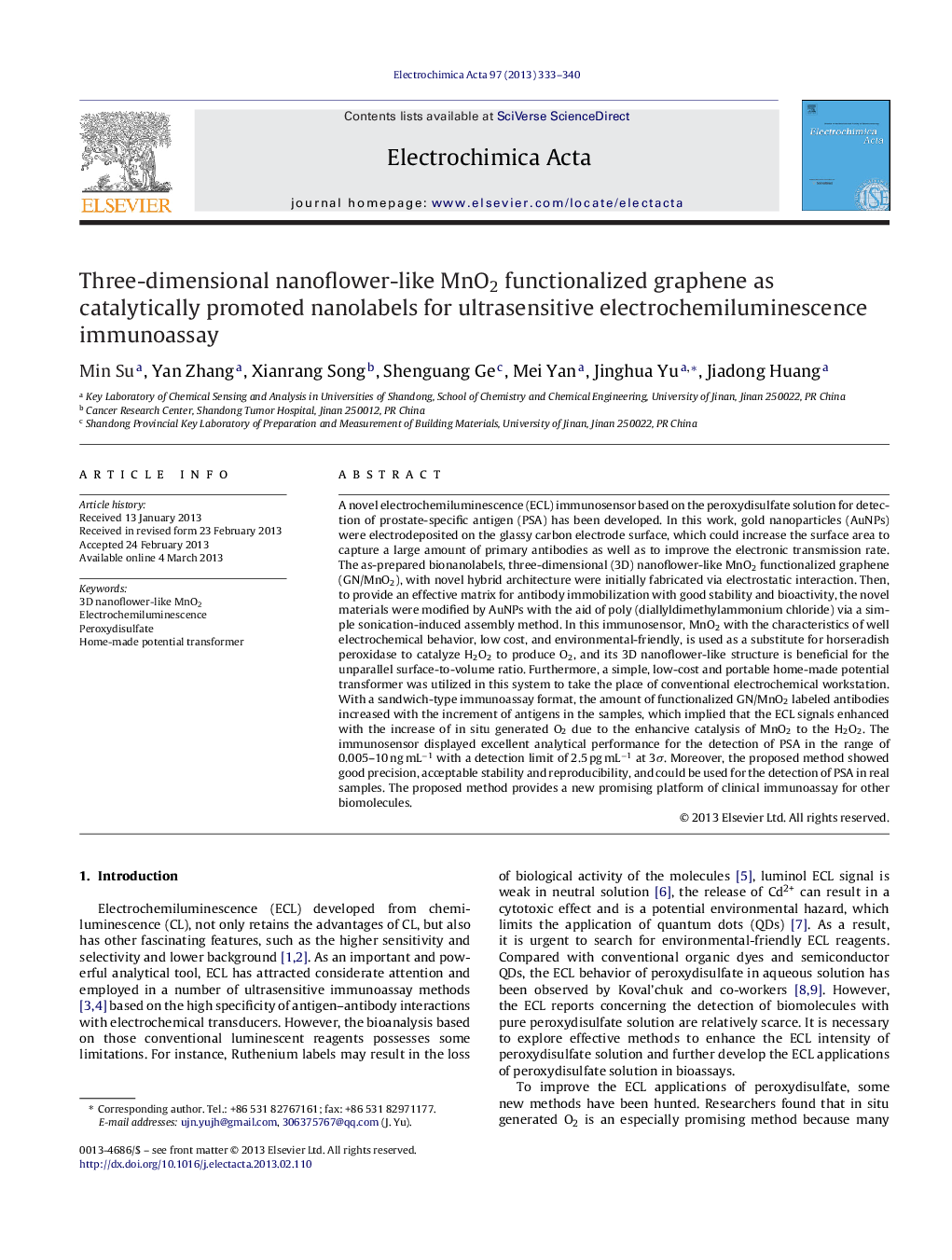| Article ID | Journal | Published Year | Pages | File Type |
|---|---|---|---|---|
| 186951 | Electrochimica Acta | 2013 | 8 Pages |
A novel electrochemiluminescence (ECL) immunosensor based on the peroxydisulfate solution for detection of prostate-specific antigen (PSA) has been developed. In this work, gold nanoparticles (AuNPs) were electrodeposited on the glassy carbon electrode surface, which could increase the surface area to capture a large amount of primary antibodies as well as to improve the electronic transmission rate. The as-prepared bionanolabels, three-dimensional (3D) nanoflower-like MnO2 functionalized graphene (GN/MnO2), with novel hybrid architecture were initially fabricated via electrostatic interaction. Then, to provide an effective matrix for antibody immobilization with good stability and bioactivity, the novel materials were modified by AuNPs with the aid of poly (diallyldimethylammonium chloride) via a simple sonication-induced assembly method. In this immunosensor, MnO2 with the characteristics of well electrochemical behavior, low cost, and environmental-friendly, is used as a substitute for horseradish peroxidase to catalyze H2O2 to produce O2, and its 3D nanoflower-like structure is beneficial for the unparallel surface-to-volume ratio. Furthermore, a simple, low-cost and portable home-made potential transformer was utilized in this system to take the place of conventional electrochemical workstation. With a sandwich-type immunoassay format, the amount of functionalized GN/MnO2 labeled antibodies increased with the increment of antigens in the samples, which implied that the ECL signals enhanced with the increase of in situ generated O2 due to the enhancive catalysis of MnO2 to the H2O2. The immunosensor displayed excellent analytical performance for the detection of PSA in the range of 0.005–10 ng mL−1 with a detection limit of 2.5 pg mL−1 at 3σ. Moreover, the proposed method showed good precision, acceptable stability and reproducibility, and could be used for the detection of PSA in real samples. The proposed method provides a new promising platform of clinical immunoassay for other biomolecules.
